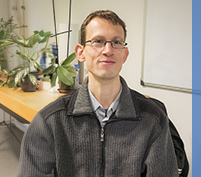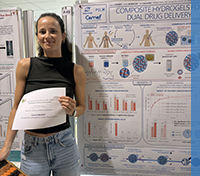PhD defense of Malik Durand
18 January 2021
Malik Durand defends his PhD in Numerical Mechanics and Materials on Jan. 18, 2021
Metallurgical mechanisms upon stress relaxation annealing of the AD730TM superalloy

Malik Durand conducted his PhD work in MSR team, under the supervision of Nathalie Bozzolo in the framework of Industrial Chair ANR SAFRAN OPALE. He defends his PhD in Numerical Mechanics and Materials on January 18, 2021 in front of the following juy:
– Alain JACQUES, IJL
– Bernard VIGUIER, IRIMAT-ENSIACET
– Rodrigue DESMORAT, ENS CACHAN
– Fabien PAUMIER, PHYMAT
– Jonathan CORMIER, ISAE-ENSMA
– Jean-Michel FRANCHET, SafranTech
Abstract:
Multi-scale microstructural analyses have been performed to identify the microstructural mechanisms controlling stress relaxation during annealing of the AD730TM turbine disk superalloy. After cooling at 100°C.min-1 and for 500 MPa initial stress value, the relaxation testing at 760°C shows atypical behavior with sluggish relaxation in the first 25 hours before relaxation occurs in a more classical manner. To understand this unusual behavior, isothermal dilatometry tests were used to decouple the effects of stress and of temperature. The later revealed a contraction of the specimens when subjected to a constant temperature. This contraction induces a tendency for an increase in stress during the relaxation test to meet the imposed condition of constant total deformation. Relaxation is then controlled by the competition between the classical relaxation mechanisms (vacancies diffusion and/or dislocation gliding depending on stress level) which tend to lower the stress and the contraction of the specimen which on the contrary tends to increase the stress level. To understand the origin of such macroscopic contraction, polycrystalline and single crystalline samples of the AD730TM alloy were characterized by different techniques, at various scales. Macroscopic contraction arises from the redistribution of chemical species between the matrix and the hardening precipitates which leads to a decrease in the lattice parameters of both phases. This work carried out on the alloy AD730TM also confirmed a similar behavior of the Rene 65 alloy. The described mechanisms most likely could apply also to many other Nickel base superalloys for which similar macroscopic contraction has been reported. Furthermore, X-ray diffraction results also allowed to estimate the lattice misfit evolution, from about +0.03% at room temperature to -0.007% at 900°C, with a close to zero value at typical stress relaxation annealing temperatures or those targeted for in-service life of the alloy.
Keywords: Nickel-based superalloy, relaxation, stress, microstructure, misfit








